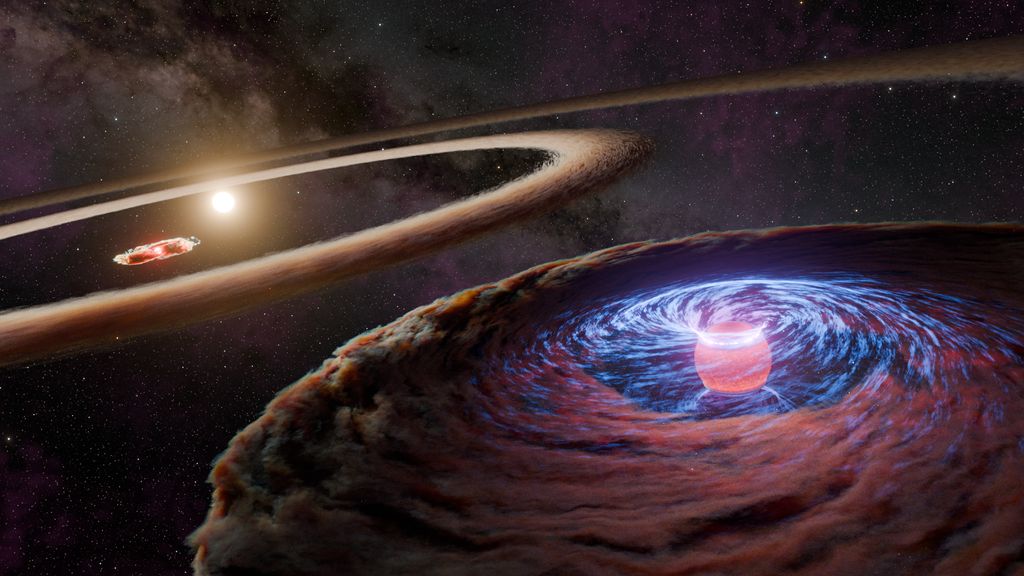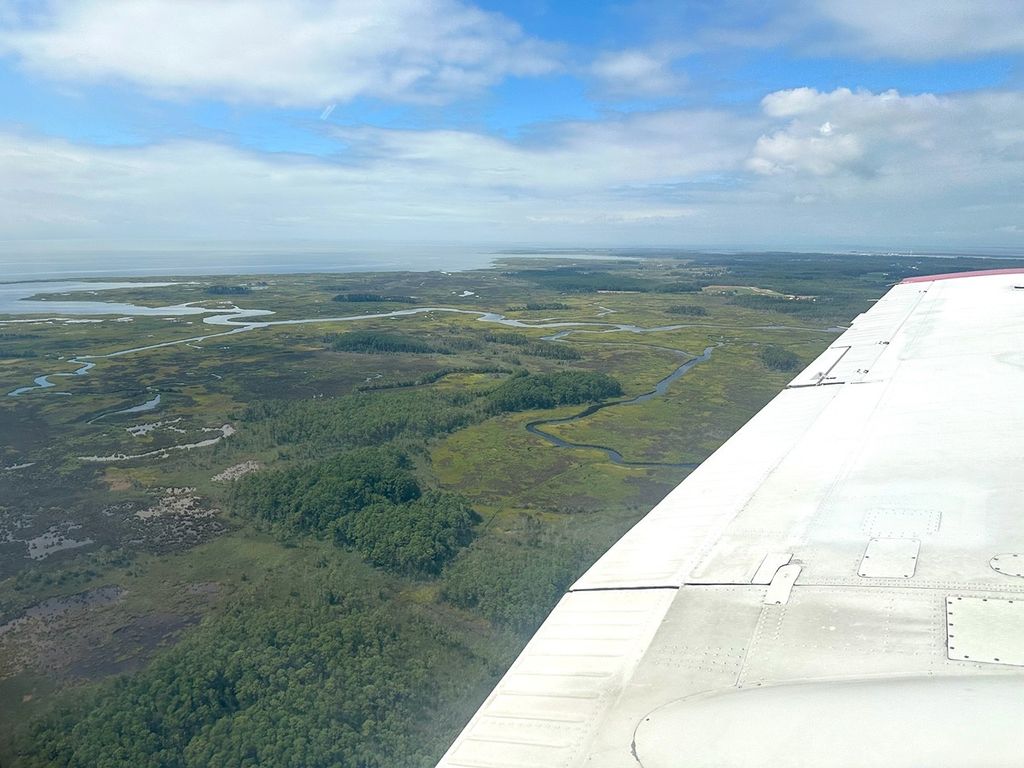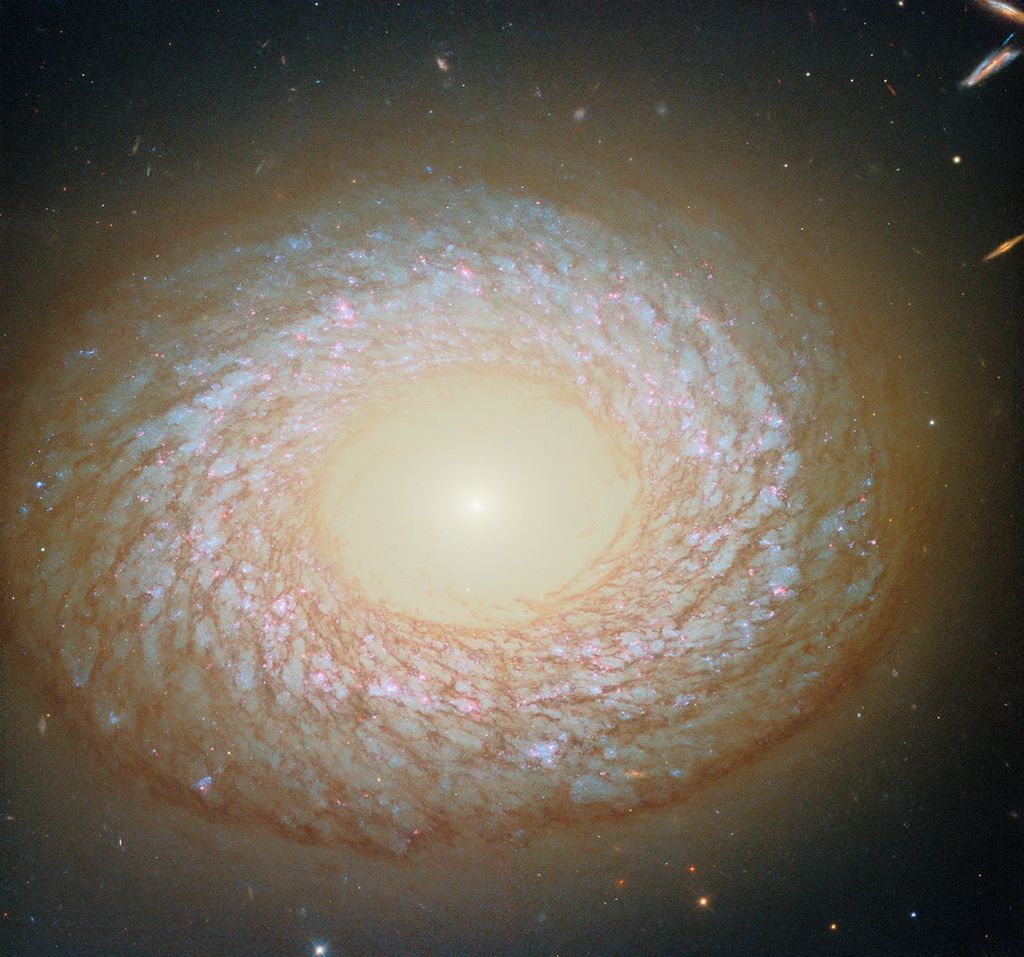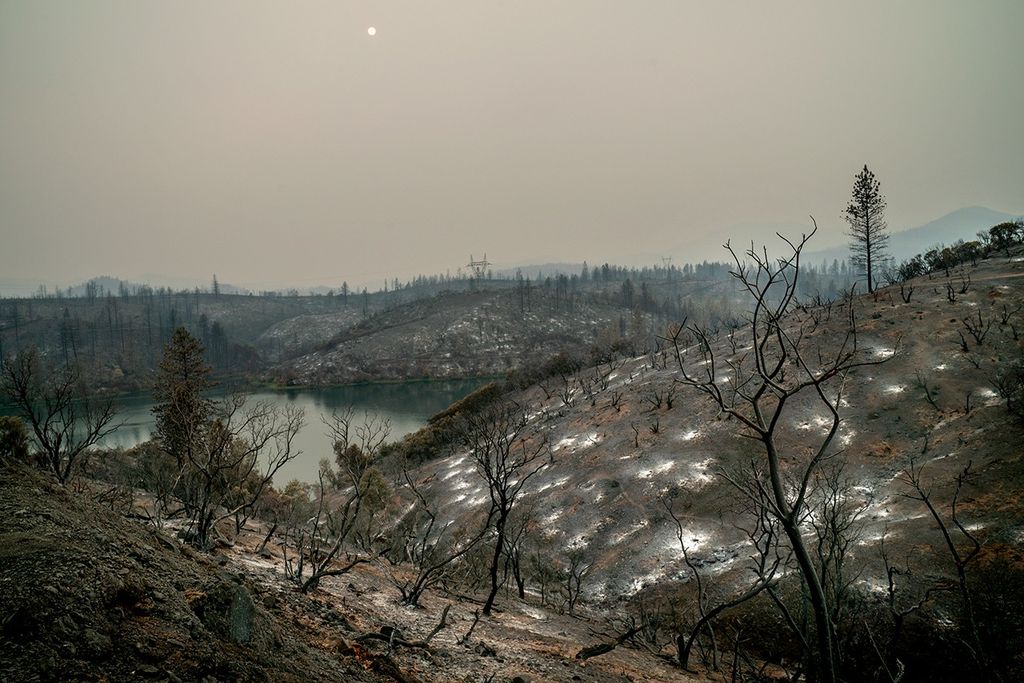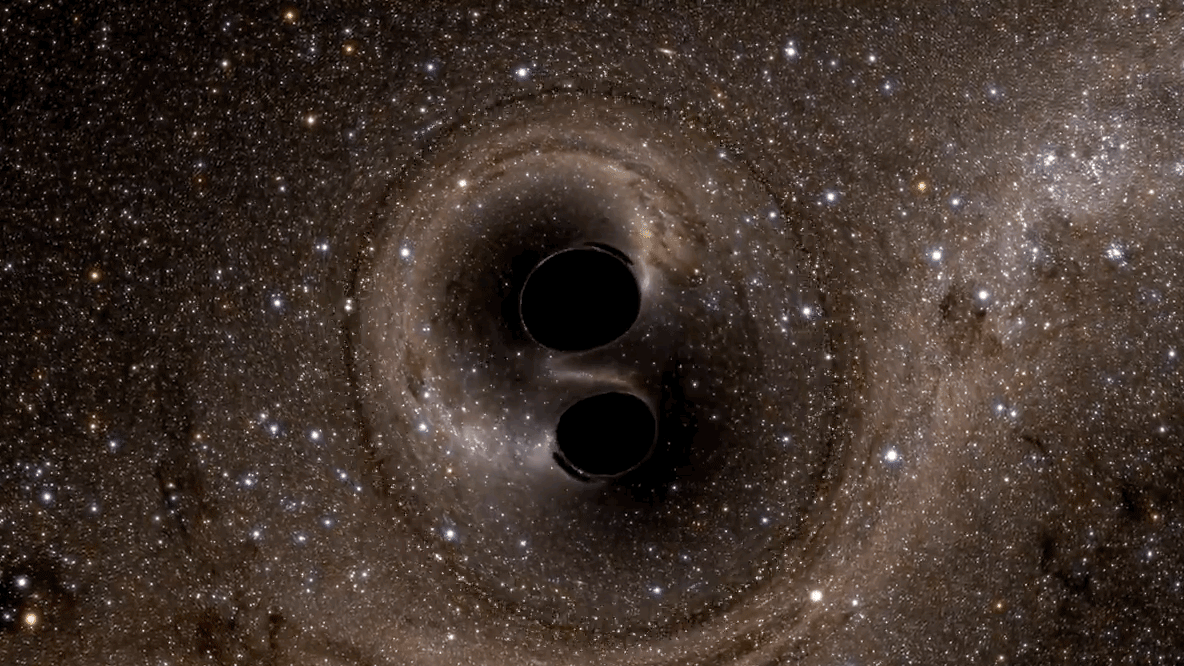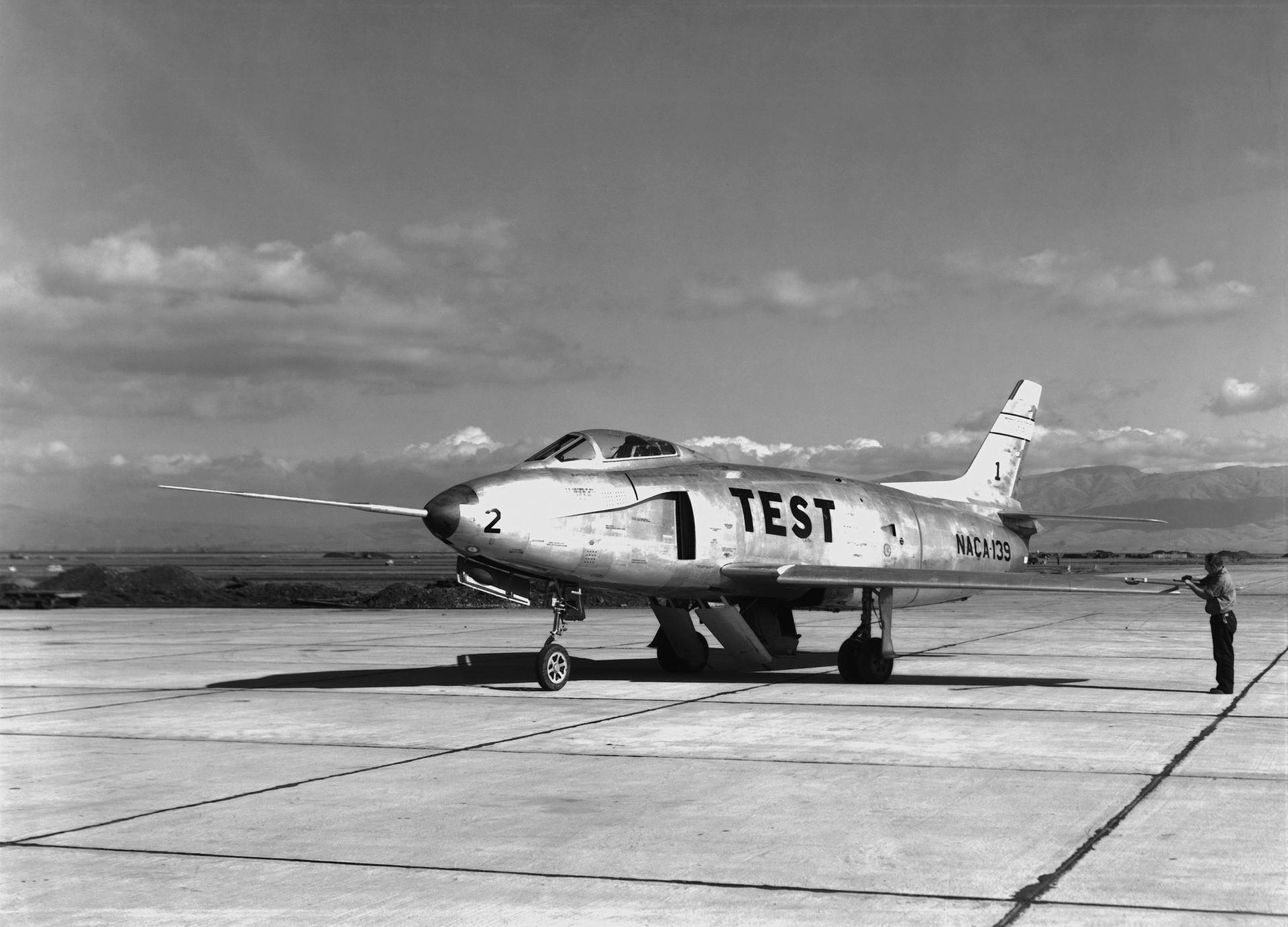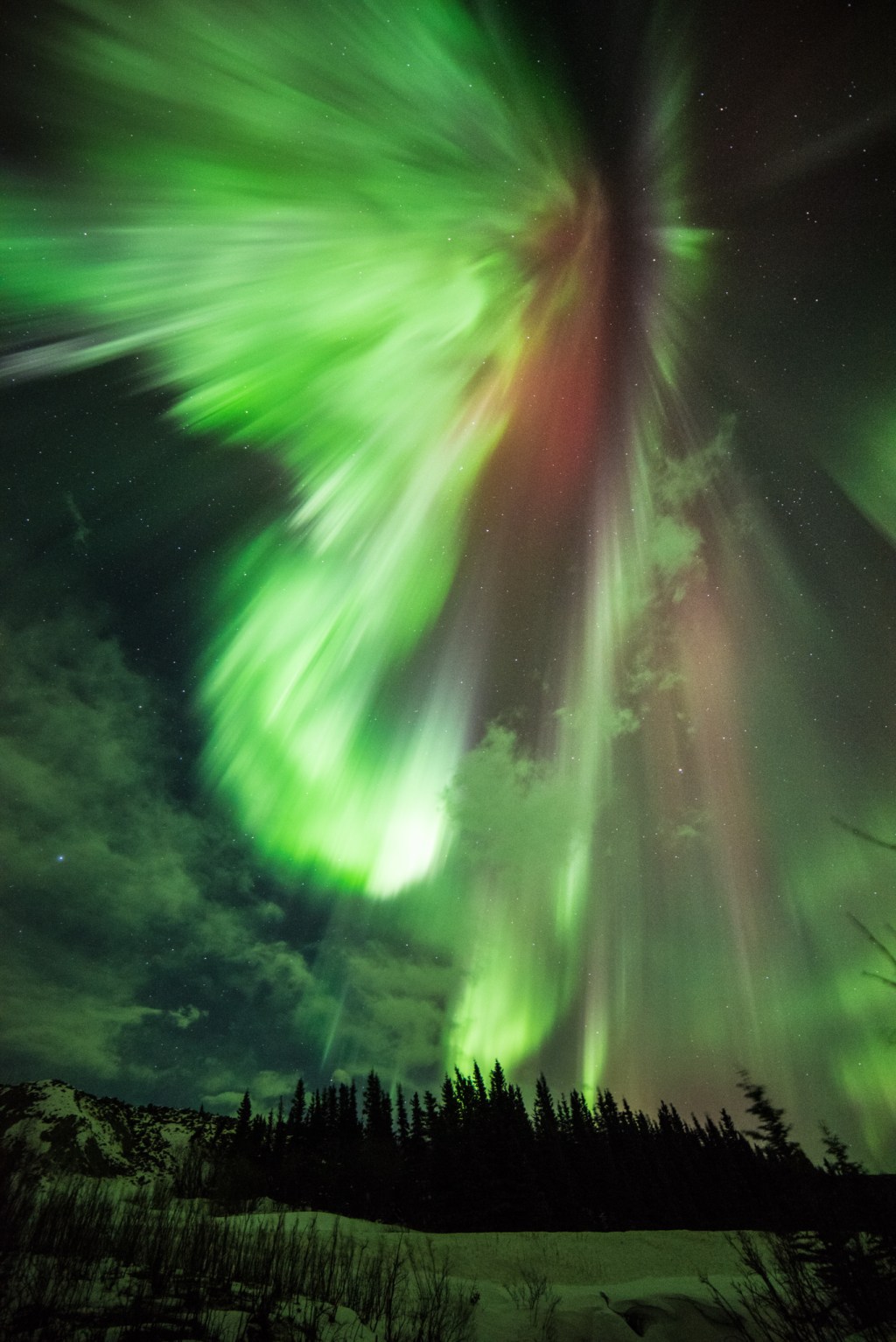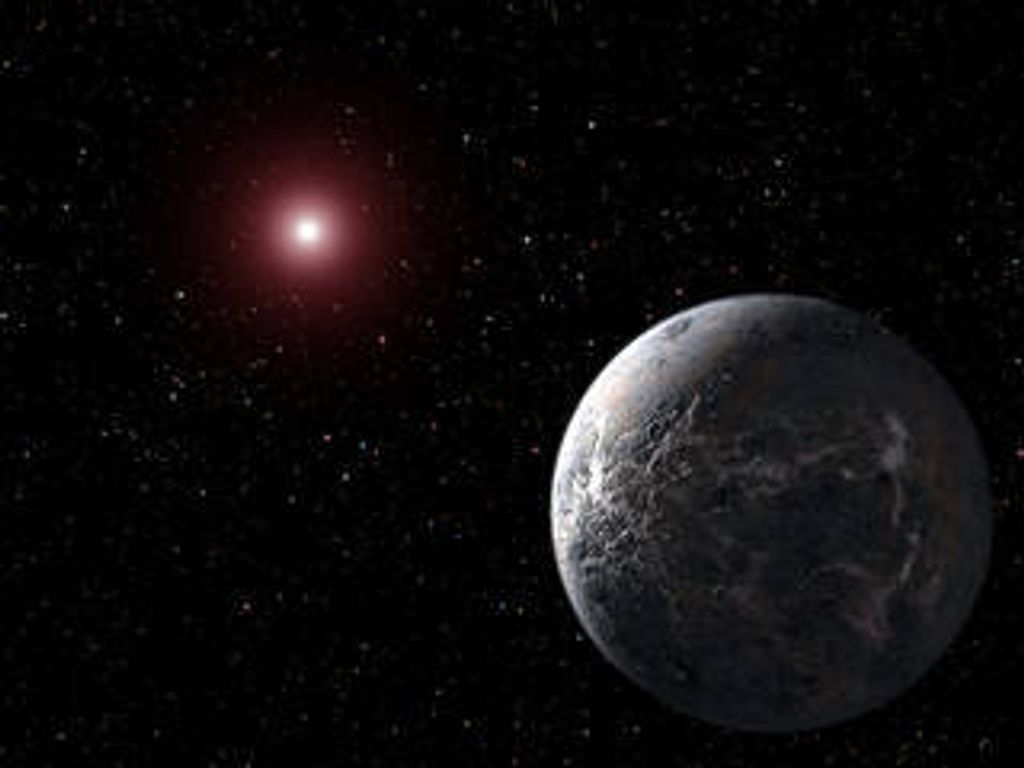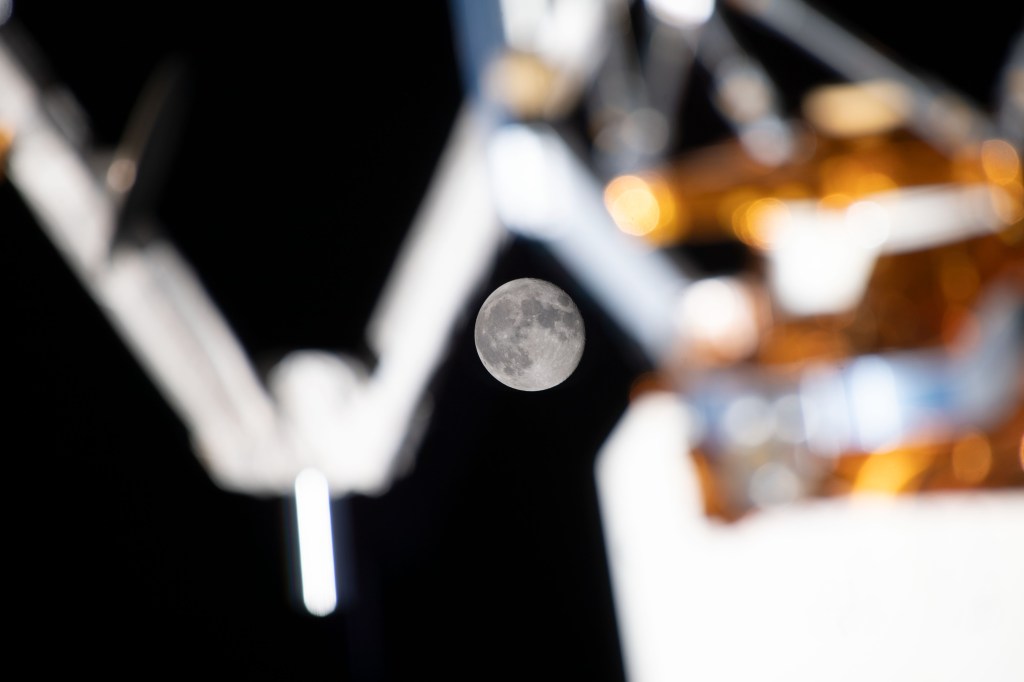1 min read
Crop of the GNz7q in the Hubble GOODS-North field

An international team of astronomers using archival data from NASA's Hubble Space Telescope and other space- and ground-based observatories have discovered a unique object in the distant universe that is a crucial link between young star-forming galaxies and the earliest supermassive black holes. This object is the first of its kind to be discovered when the universe was only 750 million years old. It had been lurking unnoticed in one of the best-studied areas of the night sky. The object, which is referred to as GNz7q, is the red dot in the center of the image of the Hubble Great Observatories Origins Deep Survey-North (GOODS-North).
About the Object
- R.A. PositionR.A. PositionRight ascension – analogous to longitude – is one component of an object's position.12 36 44.27
- Dec. PositionDec. PositionDeclination – analogous to latitude – is one component of an object's position.62° 14' 24.48"
- ConstellationConstellationOne of 88 recognized regions of the celestial sphere in which the object appears.Ursa Major
About the Data
- Data DescriptionData DescriptionProposal: A description of the observations, their scientific justification, and the links to the data available in the science archive.
Science Team: The astronomers who planned the observations and analyzed the data. "PI" refers to the Principal Investigator. - InstrumentInstrumentThe science instrument used to produce the data.HST>ACS/WFC, and HST>WFC3/IR
- FiltersFiltersThe camera filters that were used in the science observations.F814W (I), F850LP (z), F125W (J), and F160W (H)
- Object NameObject NameA name or catalog number that astronomers use to identify an astronomical object.GOODS North Field
- Object DescriptionObject DescriptionThe type of astronomical object.GOODS North Survey
- Release DateApril 13, 2022
- Science ReleaseHubble Sheds Light on Origins of Supermassive Black Holes
- CreditNASA, ESA, Cosmic Dawn Center/Niels Bohr Institute/University of Copenhagen, Denmark, Garth Illingworth (UC Santa Cruz), Pascal Oesch (UC Santa Cruz, Yale), Rychard Bouwens (LEI), Ivo Labbe (LEI)

The GOODS North Field image includes exposures acquired by the ACS and WFC3 instruments on the Hubble Space Telescope. Several filters were used to sample broad wavelength ranges. The color results from assigning different hues (colors) to each monochromatic (grayscale) image associated with an individual filter. In this case, the assigned colors are: Green: F814W (I) + F850LP (z) Red: F125W (J) + F160W (H)
Related Images & Videos

Artist's Illustration of GNz7q
This is an artist's illustration of a supermassive black hole that is inside the dust-shrouded core of a vigorously star-forming "starburst" galaxy. It will eventually become an extremely bright quasar once the dust is gone. The research team believes that the object, discovered...
Share
Details
Claire Andreoli
NASA’s Goddard Space Flight Center
Greenbelt, Maryland
claire.andreoli@nasa.gov

